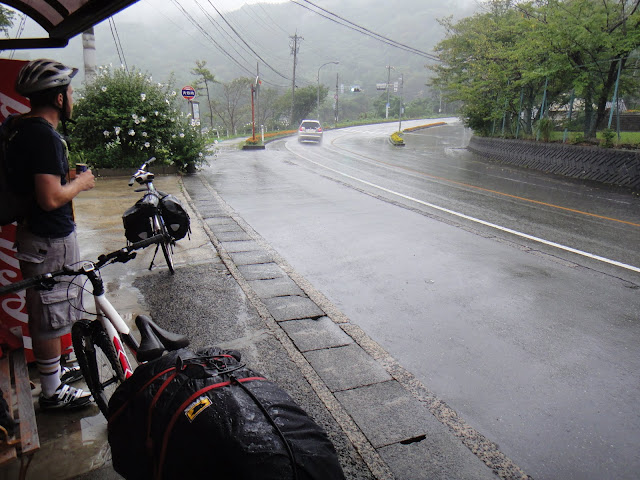There is only one flight per day from Kanazawa to Sapporo, which is an early morning flight, so we got up early and pretty much slept through the various buses, flight, and train rides required to get from here to there. Also traveling with us was Ana's paper collaborator, another gaijin, from the computer department of the school where they teach. After arriving (but before the hotels would let us check in) the three of us went looking for lunch. We managed to find a fun buffet serving pretty good pastas, pizzas, and etceteras. Being fed, we checked into our hotel, napped a bit, then put on formal wear and went to the conference reception. The few speeches were short, which was good, and there were platters of local Hokkaido crab claws and legs as well as scallop carpaccio to eat along with good local sake, which was even better. We were still pretty full from lunch, so we concentrated on the good stuff. We also met a number of engineering education folks, mostly from Japan.
The next morning we had to get down to more serious business. We attended the international session of the conference and presented our respective papers without major problems arising. We were not very impressed with most of the papers presented - the JSEE international session is not a prestigious place to present and they'll take most anything that looks sort of like a paper for it. Our stuff had to be in the top English 5 papers for the day, for sure. Well, this conference was really more about practice and resume-building for us, anyway.
The international session of the conference ended in the late afternoon and thoughts turned to dinner. Ana's collaborator had been to Hokkaido before and knew just the place, but reservations weren't available until 8:30 at night, so we napped until the appointed hour was near.

This is not where we ate dinner. This is on the way to where we ate dinner, and based on the sign we had to take a closer look in case returning later was called for. There have been some good American "diners" we've been to in Japan.
We determined that this is Not-An-American-Diner. Unless you know of American diners serving omlet-rice? Sigh.
This is where we actually ate dinner: the immense and venerable Sapporo Beer Garden, the famous home of Genghis Khan. But we arrived a bit early, and had to kill some time in the reception area / gift shop before we could dine.
Which was OK because in the gift shop we found such treasures as this frightening Beer Chocolate...
...and this skillet shaped like the island of Hokkaido.
The Sapporo Beer Garden (owned by Sapporo Beer) is possibly the biggest restaurant I have ever been to. There are at least three large buildings housing many different halls - they have a single reception area and then the staff whisks you off to wherever in their empire the free table exists.
At this point in the narrative, the references to Genghis Khan should probably be explained. First, the Japanese are prone to giving interesting non-Japanese names for things and then acting like those names are understood by anyone who speaks English when only the Japanese actually know what they mean. For instance, buffet-style places are usually labeled "Viking", as in smorgasbord, instead of buffet. Innumerable other words are mutilated instead of changed outright, like "convenience store" becoming "conbini" and "air conditioner" becoming "aircon". Genghis Khan is the Japanese name for Mongolian barbeque, and Hokkaido has a lot of Mongolian barbeque, and it could pretty much be said that we went out for Genghis Khan for dinner and everybody would understand (but only if you pronounced it in the Japanese way, "jingisukan").
The location being the Sapporo Beer Garden, there were specialty beers from Sapporo, and the night being about all-you-can-eat sizzled lamb, there was plenty of that. The idea is that they give you the huge skillet-on-a-grill and as much lamb and vegetable matter as you like, and after coating the skillet with lamb-lard you sizzle it all up and start eating. When you run out of things to grill, they bring more. The lamb had good lamb flavor and was tender and juicy and good with the sauce so we ran through quite a bit of it. At the end we tried a slice of Hokkaido cantaloupe, which you see selling in stores for absurd amounts of money ($25-35 would be pretty common per melon) and determined that they are in fact really good, though perhaps not good enough to justify the price tag in our minds.
We mostly even waited for things to cook before eating them. Mostly.
As part of our amazing streak of having regular blog entries, expect the rest of the Hokkaido trip posts to go up in regular three-day increments. The international session of the conference took place on Friday, so we had the rest of the weekend to be tourists. Here's a spoiler - we don't go to a place called Meh-Meh Land...and I swear to you that is the true, exact, and real name of an actual tourist attraction in Hokkaido.























































